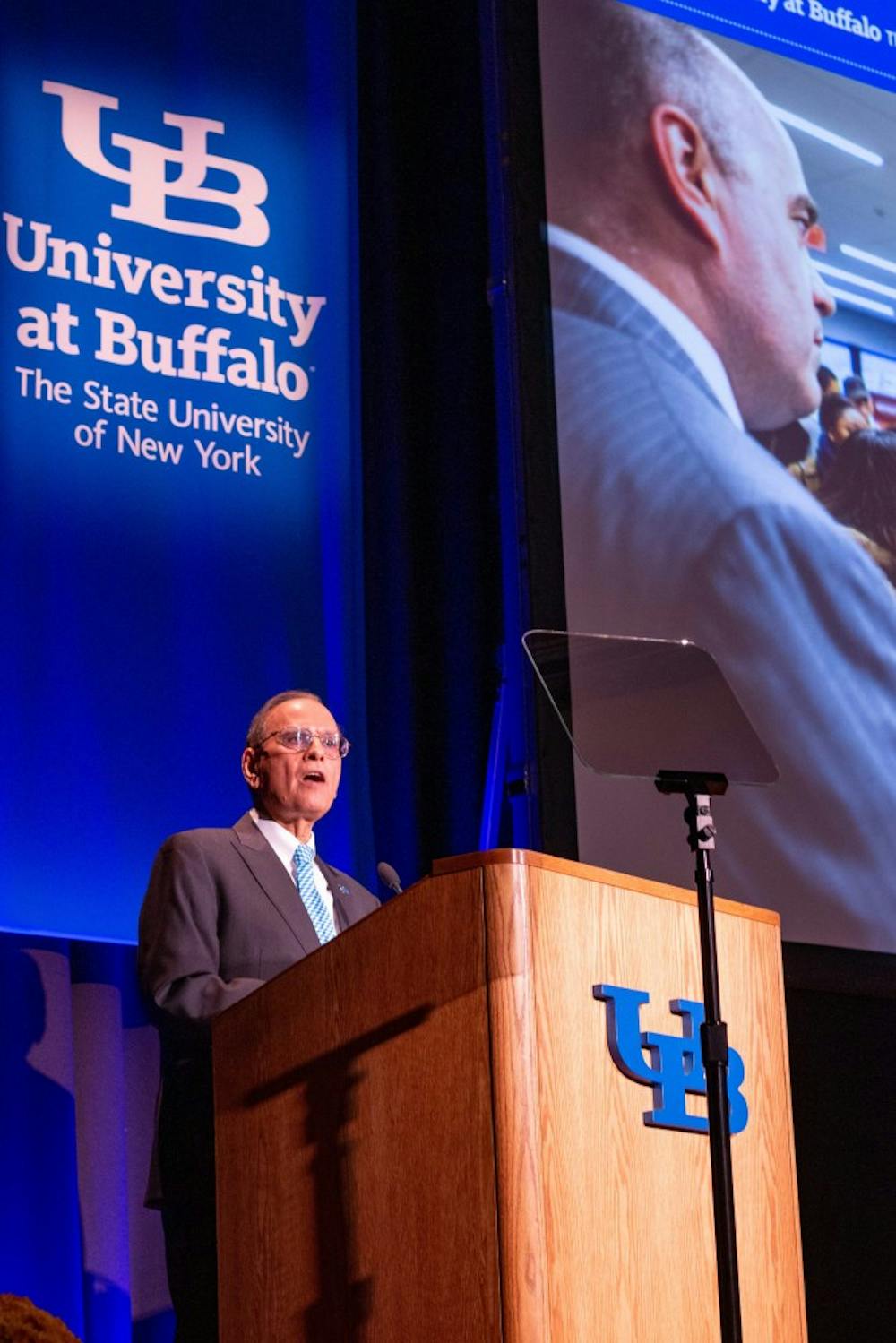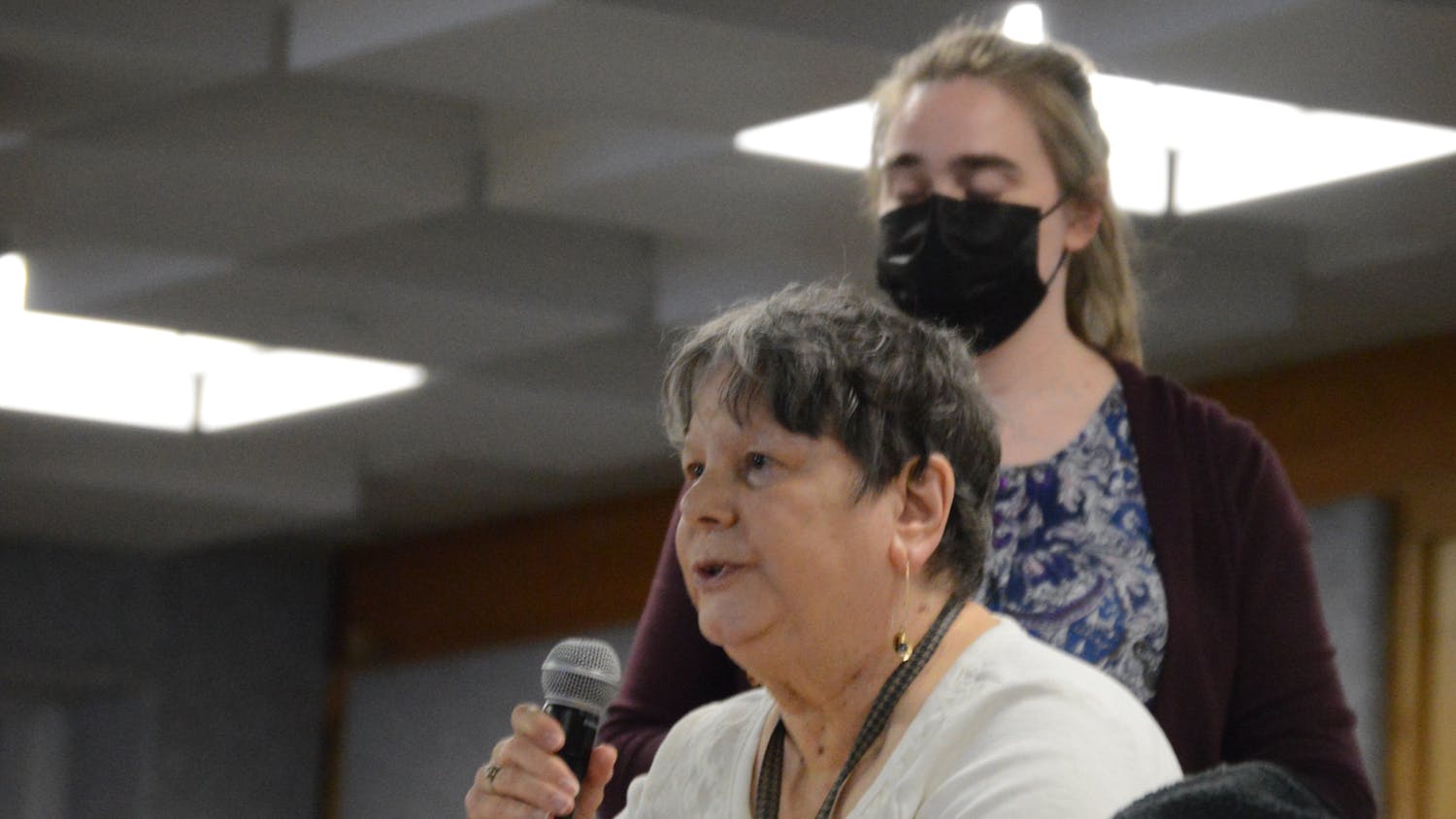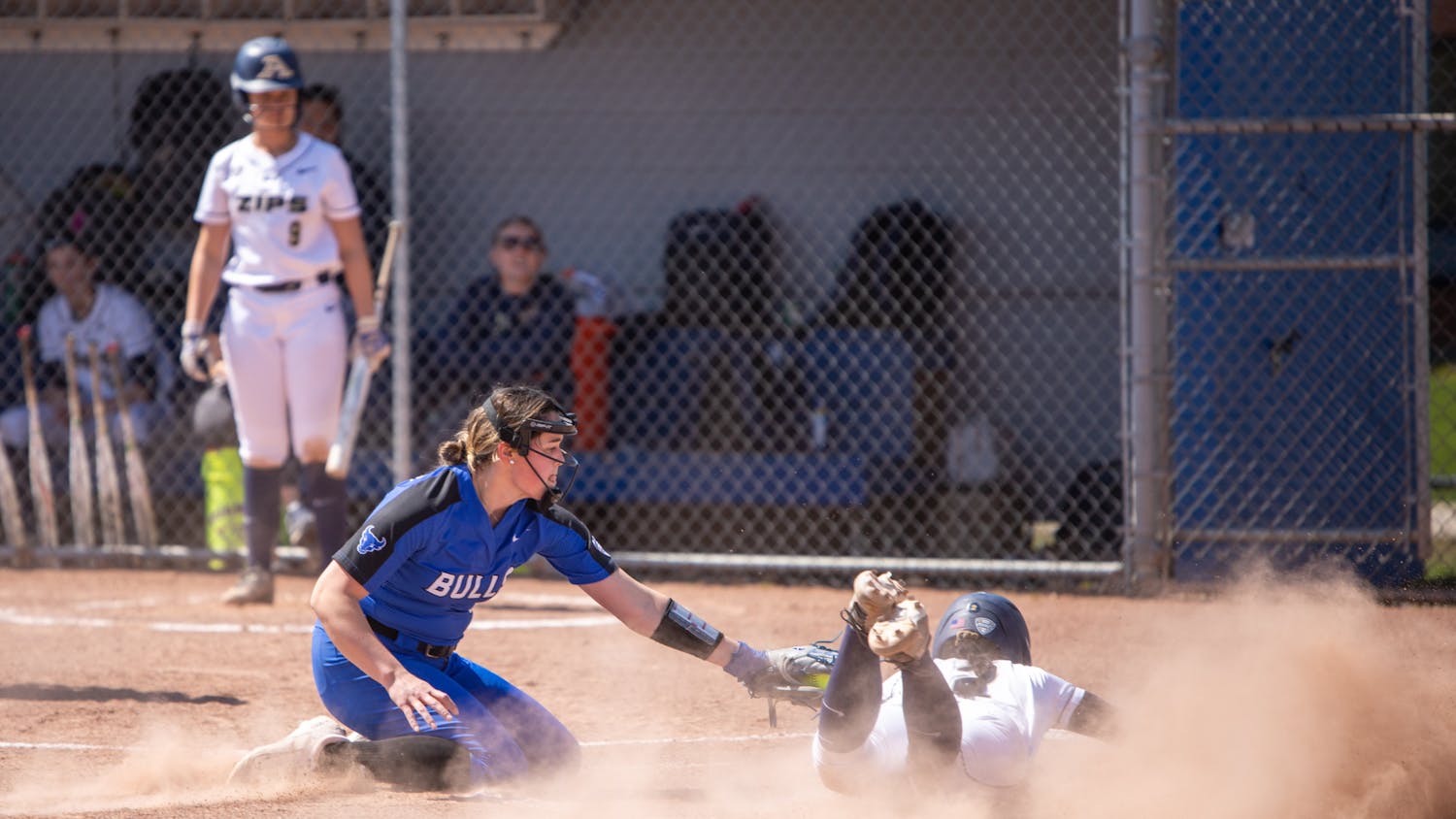UB President Satish Tripathi’s lunch preferences may seem incomplete ––for instance, ordering a Garden Burger with no buns –– but he assures his vision for the campus isn’t.
When The Spectrum sat down with Tripathi Tuesday at the Tiffin Room, we discussed what his vision entails: master plans (a term which he joked could be used about redesigning your house), finding someone to fill the shoes of departing provost Charles Zukoski and bringing the school closer to a No. 25 public university ranking in the U.S. News and World Report before he retires. He says he won’t be retiring soon, either.
But not everything we discussed was a footnote in his State of the University Address last week. We went over his thoughts on student climate protests –– and the UB Foundation’s investments, which students have recently voiced concern over –– and how he feels the College of Arts and Sciences dean and interim provost addressed faculty concerns about Ph.D. stipend funding.
Our conversation with Tripathi, lightly edited for content and clarity, follows below:
The Spectrum: During the State of the University Address, you discussed the school being named the No. 31 public university in the U.S. In 2011, when you took office, UB was ranked at No. 54. What do you hope this says about your impact on the school?
Tripathi: It's a collective work, we had a vision. We wanted to build an institution. As I said in my State of the University, it was a great institution. It needed focus, needed really honing in on how to improve the student experience, because that actually is a main focus: how to improve the graduation rate. Remember, the four-year graduation rate I talked about, was more like 30-something percent and now we’re 60%. Yeah. Think about the impact of the research and kind of research going on, if you look at the students getting awards … And I think that shows that it's not [just] me personally, it's really the impact of the institution.
TS: Some of the biggest news this month –– and some of our most read articles –– were those on the funding of Ph. D. students in the College of Arts and Sciences. What do you think about the provost’s decision to extend 100% bridge funding for an additional year, after the dean’s initial announcement, and how do you feel the dean and provost addressed faculty concerns?
T: If you look at, right now, the deans are working together and coming to the provost, saying, “This is the minimum we want so we can attract the best students.” Nationally, if you look at Ph.D. programs, and read the educational material on the programs, people are really looking at [if we’re] providing the kind of education they need … so this is a national thing. … Now that we have decided to pay, the deans have decided and the provost is supporting to pay one of the best stipends in the country at public universities. We should be able to attract the best students … so that’s a really great thing. I mean, this is really fantastic for the Ph.D. program. And it's always good to really reevaluate those things, and the deans are doing that. And the dean of arts and sciences needs more time to go through the faculty process, and so on. So I think it's a good thing that the provost has come up with a little extra money to support that process so we do the right thing and we come up with the right [solution] where the faculty are involved.
TS: With Provost Charles Zukoski leaving and A. Scott Weber taking over as interim provost, when do you expect to get to the final pool of candidates in the provost search?
T: I hope earlier than later. You can never predict the process. Sometimes it takes a whole semester, sometimes more than a semester. We'll just follow as it goes. You want the best person, not necessarily just to shorten the process. I mean, I know it takes anywhere from three to six months into it. But it depends. Sometimes you have somebody you want and it takes time to negotiate. But my goal really is to get the best person for UB in the position, as opposed to getting them the earliest.
TS: On Sept. 20, students protested the fossil fuel industry [–– specifically the UB Foundation’s investment in EnCap Flatrock Midstream, which The Investigative Post wrote about in 2017]. I know you weren’t in your office when the students reached the fifth floor in Capen, but what message would you like to give to students who participated and voiced concern?
T: … With respect to the investment at the UBF, we definitely are looking –– and they are working on –– looking at the norms that have been defined by what is called the Environment Social Governance. One of the things we have to look at is [the investment portfolio]. We have to figure out, what is the impact? And they provide an independent way to look at your sort of footprint in the areas … So we are working with that now. And we are on the right track. It's not a one-day thing that we can do and say it’s done.
TS: The wellness center master plan is currently underway and I know UB was using surveys to determine what students want from it. How is this coming along?
T: I think it's important, like thinking about 1 Capen and all the facilities in one place on the wellness [center], we want a place students can come in. And again, if you haven't seen the committee's initial thinking about it, you should. It’s important for us to have a place for students to go for the needs in terms of their values. And they can also go and do the torturing of the bodies and do the exercise there. And I'm really liking that. I mean, just really sharing that with [UB] Athletics. What we have found is a support from the students. I don't know how the survey’s going to come. But you know, in the past, at least, we thought students have to be involved in developing it, designing and so on. So it’s really a student-driven initiative.
TS: You’ve held the role of president for nine years this April. According to Inside Higher Ed, the average tenure of a college president in 2016 –– the latest year I could find –– was 6.5 years. Do you think retirement is on the way for you, or are there some things you’d still hope to accomplish before then?
T: I will continue to work as long as I am able to make a difference. And, you know, I'm not close to retirement yet. And I'm excited about our campaign that's going on for fundraising, Boldly Buffalo, and we are making progress on that. And that would make and continues to make a difference on how we help the students and faculty to achieve their goals. And definitely as we move toward [the] top 25 [institutions], there's a goal to work on as well. So I'm not thinking about retiring.
If you have any questions for Tripathi throughout the semester, email eic@ubspectrum.com or tweet @BrentonBlanchet or @UBSpectrum for a chance for your question to be featured in our spring interview with the president.

Brenton J. Blanchet is the 2019-20 editor-in-chief of The Spectrum. His work has appeared in Billboard, Clash Magazine, DJBooth, PopCrush, The Face and more. Ask him about Mariah Carey.





